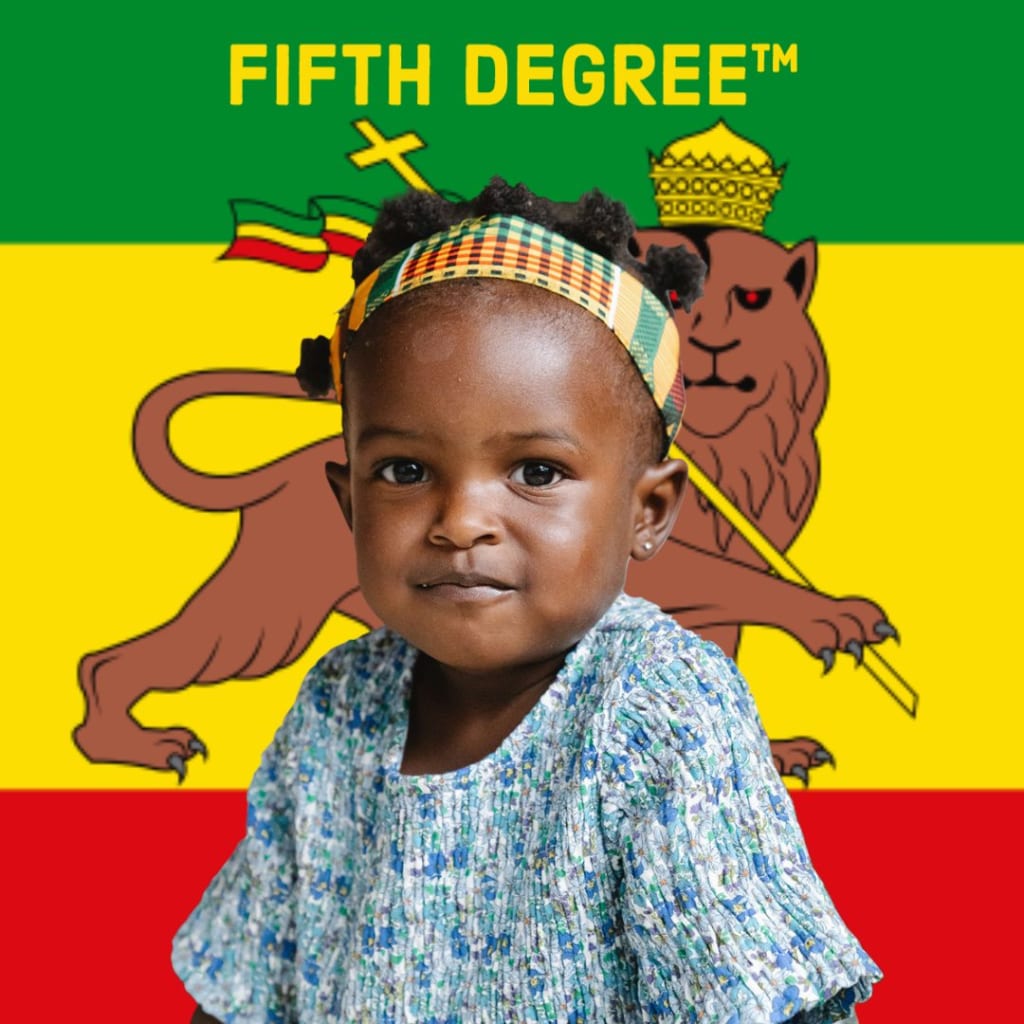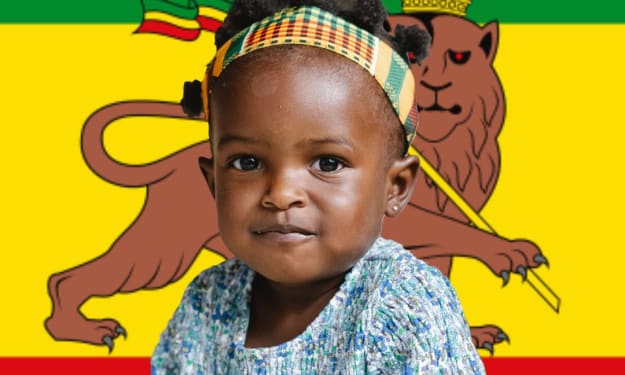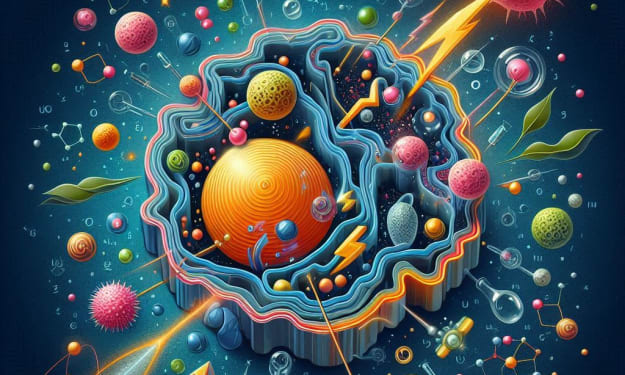Reggae Rainbow: How the Colors of Rastafarianism Bring Joy and Harmony to the World
Exploring the Cultural Significance and Global Impact of Reggae Colors

Rastafarianism is a religious and cultural movement that originated in Jamaica in the 1930s. It is based on the belief in the divinity of Emperor Haile Selassie I of Ethiopia, who is seen as the messiah by Rastafarians. The movement places emphasis on African heritage, social justice, and the empowerment of marginalized groups, including women.
One of the most recognizable aspects of Rastafarian culture is its use of colors, specifically red, gold, and green. These colors are seen on flags, clothing, and other items associated with Rastafarianism. But what do these colors represent, and why are they so significant in Rastafarian culture?
In this blog post, we will explore the meaning and significance of reggae colors in Rastafarianism and how they have become a symbol of joy and harmony in the world. We will also examine the impact of reggae colors on music, fashion, art, and social justice movements. By the end of this post, you'll have a deeper understanding of how Rastafarianism and its colors have influenced global culture and continue to inspire unity and diversity.
The Colors of Rastafarianism
Rastafarianism is known for its use of bold and vibrant colors that have significant cultural and spiritual meaning. The most prominent colors used in Rastafarian culture are red, gold, and green, which are often seen on flags, clothing, and other items associated with the movement. Let's explore the meanings and significance of these colors:
Red: The color red represents the blood of African martyrs who suffered and died during slavery and colonialism. It also represents the struggles and sacrifices of Rastafarians who have fought for their rights and beliefs. Red is a symbol of strength, courage, and the struggle for liberation.
Gold: Gold represents the wealth and prosperity of Africa, as well as the wealth of the Rastafarian people. It also represents the sun, which is a symbol of life and energy. Gold is a symbol of hope, abundance, and the promise of a better future.
Green: The color green represents the lush vegetation of Africa, as well as the beauty and fertility of nature. It also represents the spiritual and cultural roots of Rastafarianism. Green is a symbol of life, growth, and renewal.
In addition to these three colors, Rastafarian culture also incorporates other colors with their own meanings and significance, such as:
Black: Black represents the people of Africa and their struggles against oppression and inequality. It also represents the dark skin of African people, which is celebrated and revered in Rastafarian culture.
White: White represents the purity and spiritual enlightenment of Rastafarianism. It also represents peace and the hope for a better future.
Blue: Blue represents the African diaspora and the connection between African people around the world. It also represents the sea, which is a symbol of life and travel.
The Symbolism of Reggae Colors
Reggae music has become synonymous with the vibrant colors of Rastafarianism, particularly red, gold, green, and black. These colors have become a symbol of the Jamaican culture and have been adopted by reggae musicians, fans, and supporters around the world. But what do these colors represent in reggae culture, and why are they so significant?
The colors of Rastafarianism were adopted by reggae culture in the 1960s and 1970s as the music became more popular and widespread. Reggae musicians, such as Bob Marley, Peter Tosh, and Bunny Wailer, were part of the Rastafarian movement and used these colors in their music and personal style. As reggae music gained international recognition, so did the colors of Rastafarianism, which became a symbol of the music and Jamaican culture.
Here are the meanings behind each color in reggae culture:
Red: In reggae culture, red represents the struggles and sacrifices of the African people and their fight for liberation. It also represents the blood of those who have suffered and died during slavery and oppression.
Gold: Gold represents the wealth and prosperity of Jamaica and the Caribbean, as well as the cultural and spiritual richness of the region. It is also a symbol of hope and the promise of a better future.
Green: Green represents the natural beauty and vegetation of Jamaica and the Caribbean. It also represents the spiritual and cultural roots of reggae music.
Black: Black represents the struggles and hardships faced by black people around the world, including in Jamaica and the Caribbean. It is also a symbol of strength and resilience.
The Impact of Reggae Colors on Music and Fashion
Reggae music and Rastafarianism have had a significant impact on music and fashion, particularly through the use of bold and vibrant colors. The colors of red, gold, green, and black, which are associated with the movement, have become a symbol of Jamaican culture and reggae music, and have influenced album artwork, music videos, and merchandise. In addition, reggae fashion has become a major influence on streetwear and popular culture.
Album Artwork, Music Videos, and Merchandise
Reggae musicians have used reggae colors in their album artwork and music videos to convey the message and meaning of their music. Bob Marley's album covers often feature red, gold, and green, and his music videos often showcase these colors as well. The colors have become synonymous with reggae music and are instantly recognizable to fans. In addition, merchandise such as t-shirts, hats, and posters often feature reggae colors and have become a popular way for fans to show their support for the music and the culture.
Influence on Fashion
Reggae fashion has had a significant impact on streetwear and popular culture. The vibrant colors and bold patterns of Rastafarian clothing have influenced fashion designers around the world, who have incorporated reggae colors and patterns into their collections. In addition, the use of reggae colors in streetwear has become a symbol of rebellion and resistance, particularly among marginalized communities. The popularity of reggae fashion has also led to the rise of Jamaican fashion designers, who are creating unique and innovative designs inspired by their culture.
Reggae Colors in Art and Design
Reggae colors have become a popular theme in art and design, not only in music and fashion but also in other creative industries. Artists and designers around the world have incorporated reggae colors into their work, creating unique and innovative designs that celebrate Jamaican culture and Rastafarianism.
Examples of artwork and design that incorporate reggae colors include posters, murals, paintings, and graphic designs. These works often feature the vibrant colors of red, gold, green, and black, as well as other symbols of Jamaican culture, such as the lion, the Jamaican flag, and the dreadlocks hairstyle. The use of reggae colors in art and design has become a way to celebrate and honor the music and culture of Jamaica, as well as to express individual creativity and artistic vision.
The Use of Reggae Colors in Social Justice Movements and Activism
Reggae colors have also been used in social justice movements and activism, particularly in the fight against racism and oppression. The colors of red, gold, green, and black have become a symbol of resistance and solidarity, representing the struggles and hardships faced by marginalized communities around the world. Activists and organizers have used reggae colors in protest signs, banners, and clothing, as well as in social media campaigns and other forms of digital activism.
The use of reggae colors in social justice movements and activism is a testament to the power of art and design in creating change and inspiring action. By incorporating reggae colors into their work, artists and activists are able to communicate a powerful message of hope, resilience, and unity, and to mobilize people around a common cause.
The Role of Reggae Colors in Fostering Unity and Diversity
Reggae colors play an important role in fostering unity and diversity within Rastafarianism and reggae culture. The colors of red, gold, green, and black are not just symbols of Jamaican culture, but also represent the unity of the African diaspora and the diversity of its cultures and peoples. Red, gold, and green are the colors of the Ethiopian flag, which is seen as a symbol of African unity and sovereignty. Black represents the struggles and resilience of the African people throughout history.
Reggae music, which is closely associated with Rastafarianism and reggae colors, has had a global impact on promoting the message of peace, love, and unity. Reggae music has been used as a tool for social change and activism, addressing issues such as poverty, inequality, and racism. Through its uplifting and positive messages, reggae music has helped to unite people of different races, cultures, and backgrounds around a common goal of creating a more just and equitable world.
The global impact of reggae music has also helped to promote diversity and cultural exchange. Reggae music has been embraced by people from all over the world, and has inspired the creation of new musical styles and genres that incorporate elements of reggae. This has led to a rich and diverse musical landscape, where different cultures and traditions come together to create something new and unique.
Conclusion
Reggae colors hold a great significance in Rastafarianism and reggae culture. They represent unity, diversity, and the struggles and resilience of the African people. The colors of red, gold, green, and black have not only been used to create a distinct cultural identity, but have also been adopted by people worldwide as symbols of peace, love, and unity.
Reggae music and reggae colors have made a profound impact on people around the world, inspiring them to embrace diversity and celebrate different cultures. Through music and fashion, reggae colors have brought people together, promoting the message of love, peace, and unity.
As we move forward, it is essential to continue to celebrate diversity and spread messages of love and unity. We should embrace the differences that make us unique and work together to create a better world for all. By continuing to appreciate and celebrate the significance of reggae colors in Rastafarianism and reggae culture, we can keep spreading the message of peace, love, and unity to people worldwide.
Final Note
If you’re interested in exploring who is Jah and Rastafarian culture further, we invite you to check out Fifth Degree’s collection of Rastafarian clothing. Our clothing is designed to reflect the spirit and teachings of Rastafarianism, with bold colors, empowering messages, and a commitment to sustainability and ethical production. We believe that what you wear can be a powerful expression of your values and beliefs, and we’re proud to offer a range of high-quality, stylish, and socially conscious clothing for individuals who are seeking to live in harmony with nature and the divine. Visit our website today to learn more about our collection and find the perfect Rastafarian clothes for woman for you.
About the Creator
Enjoyed the story? Support the Creator.
Subscribe for free to receive all their stories in your feed. You could also pledge your support or give them a one-off tip, letting them know you appreciate their work.






Comments
There are no comments for this story
Be the first to respond and start the conversation.